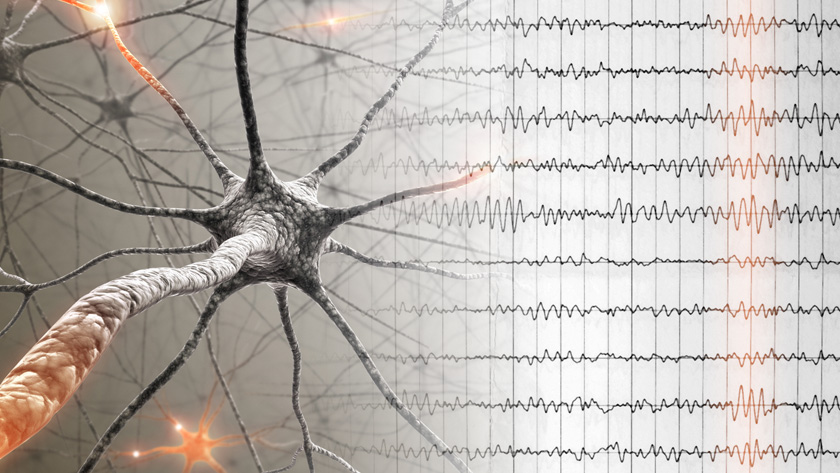
Researchers from the Krembil Brain Institute have shed light on the long-term effects of deep brain stimulation on neuronal activity in a brain region involved in Parkinson disease.
A hallmark feature of Parkinson disease is an increase in a type of neuronal activity—known as beta oscillations—in the basal ganglia region of the brain. Previous studies suggest that deep brain stimulation applied to this region reduces motor symptoms of the disease by disrupting this form of patterned neuronal activity.
According to Krembil Senior Scientist Dr. Robert Chen, however, beta oscillations are only one piece of the puzzle.
“When measuring the activity of large groups of neurons, the signals that we acquire are made up of oscillations, or patterned activity, as well as non–patterned, or aperiodic, activity, which is often viewed as background activity,” says Dr. Chen. “To understand precisely how deep brain stimulation treats disease symptoms, we need to consider its long-term effects on patterned and non-patterned forms of neuronal activity.”
To determine the long-term effects of deep brain stimulation in the basal ganglia, Dr. Chen’s team recorded local neuronal activity in patients with Parkinson disease during six study visits over 18 months. They then applied computational methods to separate the oscillatory and aperiodic components of the signals.
“It has previously been very challenging to study the long-term effects of deep brain stimulation on brain activity because we were limited to recording from neurons over a short period while surgically implanting the electrodes,” explains Dr. Ghazaleh Darmani, a postdoctoral researcher in Dr. Chen’s lab and the first author of the study. “In this study, we were able to assess neural signals over a longer period because our patients had specialized devices that can record local activity throughout the study period.”
The team discovered that deep brain stimulation increased aperiodic beta activity over time. In contrast, beta oscillations were stable over time.
These findings call into question the traditional view that deep brain stimulation treats Parkinson symptoms by reducing beta oscillations in the basal ganglia, and highlight the need to consider different forms of neuronal activity when studying the disease and developing therapies.
The researchers also found that dopaminergic medications that are commonly used to treat the disease affect these two types of brain activity differently. These medications did not affect aperiodic beta activity but did suppress beta oscillations.
“Our findings suggest that beta oscillations and aperiodic activity represent distinct but complementary neural processes in Parkinson disease,” says Dr. Darmani. “Clarifying how each type of activity contributes to disease symptoms is an important step towards developing more targeted and effective deep brain stimulation treatments.”
This work was supported by the Canadian Institutes of Health Research, Medtronic Inc. and the UHN Foundation. Dr. Robert Chen is a Professor in the Division of Neurology, Department of Medicine at the University of Toronto.
Darmani G, Drummond NM, Ramezanpour H, Saha U, Hoque T, Udupa K, Sarica C, Zeng K, Cortez Grippe T, Nankoo JF, Bergmann TO, Hodaie M, Kalia SK, Lozano AM, Hutchison WD, Fasano A, Chen R. Long-Term Recording of Subthalamic Aperiodic Activities and Beta Bursts in Parkinson's Disease. Mov Disord. 2023 Feb. doi: 10.1002/mds.29276.

Neuronal firing can generate either patterned oscillations or non-oscillatory ‘aperiodic’ activity, both of which are seen in electroencephalograms and deep-brain recordings. In the above illustration, oscillatory activity is highlighted in orange on the right.




